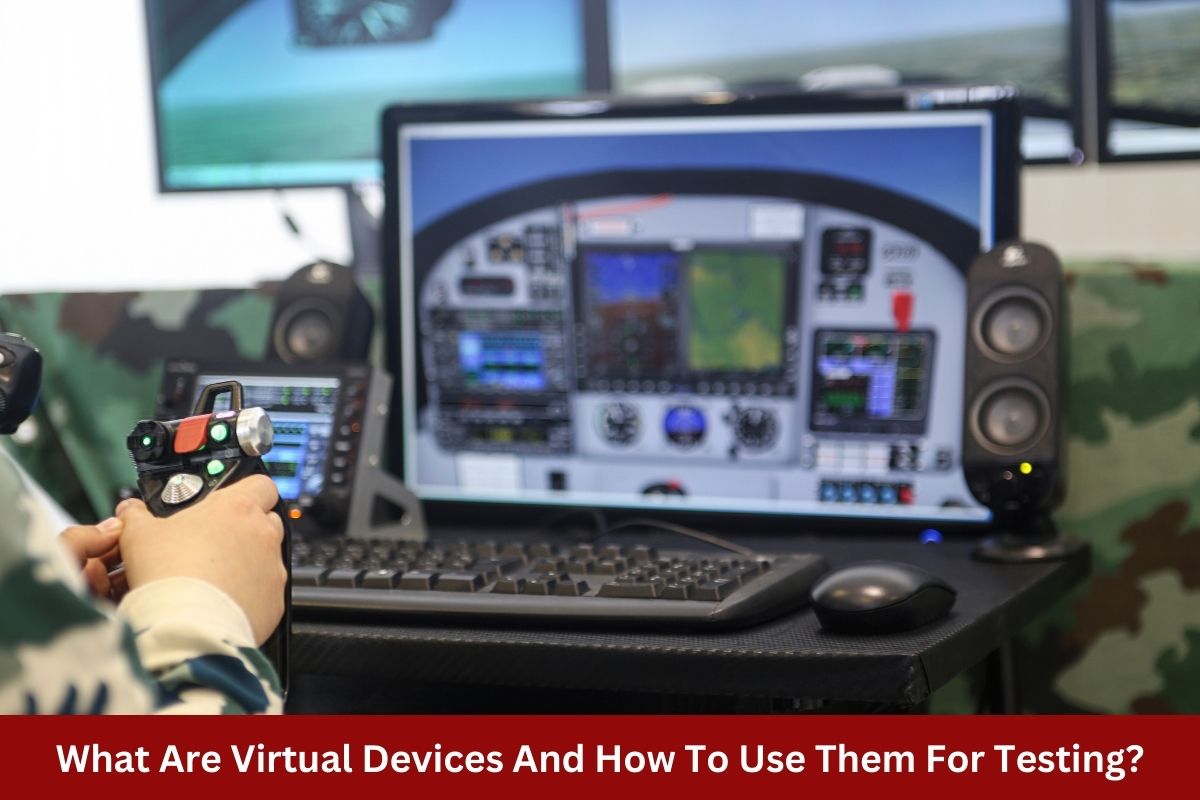Companies use cutting-edge technology to create mobile applications to satisfy customers’ rising expectations. But ensuring these applications work accurately while being compatible with various hardware and operating systems is daunting.
Physical device testing may simulate a more accurate real-world scenario, but businesses often struggle with testing on multiple devices. This amplifies the need for virtual devices, emulators, or simulators.
Simulators are computer programs that simulate real device behavior, allowing testers to test their mobile applications in a virtual setting. As a result, they have now become a crucial part of the testing platforms.
These mobile testing platforms allow testers to test their applications without needing real devices, multiple operating systems, and network configurations. This can help businesses dramatically save testing time and expenses while guaranteeing that their mobile apps are high-quality and functioning by utilizing a mobile test platform that supports virtual devices.
But before we dive deeper into virtual devices to see how to use them for testing. Let’s first learn about them.
What are Virtual Devices?
Virtual devices, called emulators or simulators, are computer programs that mimic the behavior of smartphones or tablets. This facilitates the testing of mobile applications without the need for physical devices. Developers and testers can test their mobile applications in various simulated scenarios by customizing virtual devices on multiple mobile app testing tools online to emulate multiple operating systems, screen sizes, resolutions, and network circumstances.
Virtual devices offer a convenient approach to testing mobile applications, especially in the early stages of development. Even though they might not have the same accuracy as a real device, they offer a cost-effective solution to businesses by letting them test their software on various hardware and operating systems without purchasing.
Different Types of Virtual Devices
Emulators and simulators are the two types of virtual devices frequently used for testing mobile applications. Both have advantages and disadvantages; Emulators are slow but accurate, while simulators are faster but may not accurately represent real-world usage.
Emulators
Emulators are essential components of any mobile test platform. This virtual device can replicate the hardware and software environment, such as processor, memory, and storage of physical devices like smartphones and tablets. Providing testers with an accurate representation of the device’s behavior.
Emulators are especially helpful for testing mobile applications that need low-level access to hardware components like the camera, GPS, or accelerometer. Emulators enable testers to assess the functioning of the application under various usage scenarios. Simulating several hardware components ensures the application operates as intended in real-world circumstances.
Simulators
Unlike emulators, simulators do not replicate the hardware component but repeat the operating system. They are beneficial for testing fundamental features like user interface, navigation, and user experience. Simulators are also a crucial component of mobile app testing tools online because they don’t need low-level access to the device hardware and are often faster than emulators.
Since simulators may not accurately reflect real-world scenarios, thus it’s advised to combine them with additional testing techniques, such as physical device testing or emulation testing, to provide rigorous testing of mobile applications.
How to use a virtual device for Testing Mobile application
Follow these steps to test your mobile application using a virtual device.
Step I: Installing an Emulator
Android Studio’s built-in emulator, Genymotion, and Xamarin are popular solutions for testing mobile applications. These emulators allow developers to test their applications across various platforms without needing a physical device because they can simulate multiple configurations. The most common emulator for the iOS mobile test platform is Xcode. It is the official Integrated Development Environment (IDE) from Apple. It gives flexibility to the developers to test their applications on various iOS devices, including different screen sizes, operating system versions, and device orientations.
Step II: Creating a virtual device
The next step in testing a mobile application is creating a virtual device. This is accomplished by specifying the operating system, device model, screen size, and other essential settings. Several mobile app testing tools online also provide cloud-based testing services. These tools make it simpler to test the application across a range of configurations without the requirement for real devices.
Step III: Launching the Emulator
After creating your virtual device to test your application, it’s time to test the application by launching the emulator. Select the Android Studio or Apple Xcode virtual device and click the “Start” or ” Run” button. Your emulator will be launched. Once the emulator is initiated, programmers can run their apps to find and solve bugs and check for platform compatibility.
Step IV: Installing the application
You can either use the emulator’s built-in app store or drag and drop the program’s APK file onto the emulator window to install the application in the emulator. After the application is installed, testers can replicate user scenarios to check for bugs.
One can also use cloud-based emulators to test mobile applications by logging into various mobile test platforms. They can save time and resources by enabling teams to test apps on multiple devices and operating systems.
Step V: Test and Debug the application
After installation, you can test the application on the emulator like on an actual device. Use the emulator’s controllers to imitate touches, swipes, and other interactions. The debugging tools provided by the emulator can be used to locate and fix any problems or faults.
Conclusion
Selecting the appropriate emulators and simulators is crucial to guarantee the smooth operation of your mobile applications or websites. Cloud-based testing solutions, on the other hand, can help you save time and money while delivering better test results.
The premier cloud-testing platform, like pCloudy, can help to alleviate the limitations imposed by conventional emulators and simulators.
